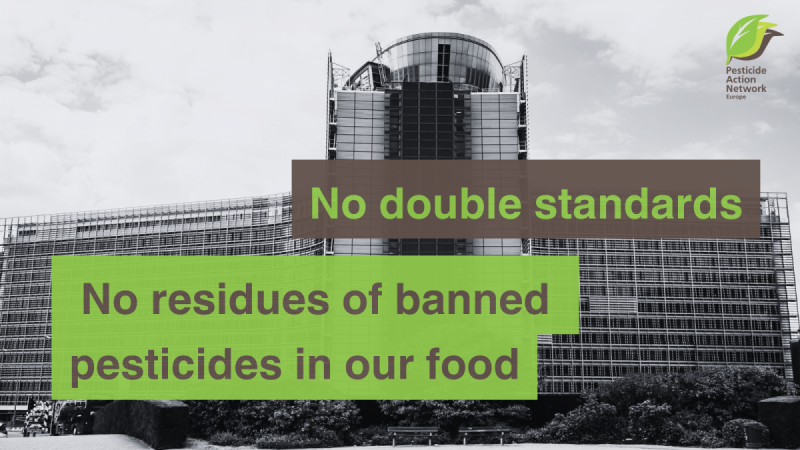Despite their ban in the EU, six reprotoxic pesticides, including Thiacloprid and Mancozeb, are still present in imported food. Two other pesticides are still not banned, because the EU is dragging its feet. PAN Europe wrote to the European Commission urging it to ensure that all reprotoxic pesticides are banned and no residues are permitted in food.
According to the Pesticides Regulation, European citizens and the environment must not be exposed to substances that damage the unborn child and/or fertility. These substances are classified as 'toxic for reproduction'. They can only be allowed if no contact with humans can be expected, which is never applied in practice. Therefore, almost all reprotoxic substances have now been banned in the EU. However, EU citizens are still not completely safe from them. While the EU forbids the use of these pesticides and the presence of their residue in EU-grown products, it allows imported products from third countries to contain residues of such substances.
Table: EU-banned reprotoxic active substances with detectable residues in food products
|
Substance name |
Hazard classification (date) |
EU-ban date |
|
Isopyrazam |
Toxic for reproduction (2020) |
08/06/2022 |
|
Mancozeb |
Toxic for reproduction (2019) |
04/01/2021 |
|
Cyproconazole |
Toxic for reproduction (2015) |
31/05/2021 |
|
Cyproconazole |
Toxic for reproduction (2015) |
31/05/2021 |
|
Thiacloprid |
Toxic for reproduction (2015) |
03/02/2020 |
|
Glufosinate |
Toxic for reproduction | 31/07/2018 |
|
Carbendazim |
Toxic for reproduction (2019) |
30/11/2014 |
This is due to the application of double standards between food produced in the EU and food produced in third countries, regarding the regulation of the permitted residue level in EU food. This situation is unacceptable and contradicts EU law in many ways. It creates a ‘double standard’ that puts at risk the health of local communities and biodiversity from third countries. It also exposes EU consumers through imported food. Last, it puts EU farmers into an unfair and disadvantageous market competition. PAN Europe wrote to the European Commission asking it to put an end to this practice and ensure that no residues of EU-banned substances are permitted in food. We also published a policy briefing detailing what the European law says about the presence in food of residues of all pesticides banned in the EU.
Two reprotoxic pesticides are still allowed in the EU
Another source of concern expressed in our letter is that some reprotoxic pesticides continue to be on the EU market, while their residues are allowed and detected in food. This is against the ‘no contact with humans’ requirement of the Pesticide Regulation. This is the case for flurochloridone and dimethomorph, which were classified as toxic for reproduction in 2018 and in 2019, respectively. More recently, in 2023, dimethomorph was also identified by the European Food Safety Authority (‘EFSA’) as an endocrine disruptor for humans and non-target organisms. The approval period expired in 2017 but continues to be prolonged year after year by the European Commission, instead of removing it from the market. The approval for flurochloridone expired in 2020 and its use has been extended since.
In March 2024, the EU Member States finally adopted a proposal by the EU Commission to ban dimethomorph. Yet, this ban will fully occur only in 18 months due to the adoption of longer transitional and grace periods than those foreseen for such toxic pesticides in the Regulation. In the meantime farm workers, residents of agricultural zones but also European consumers keep being exposed to these dangerous substances. The European Commission must proceed with the non-renewal of flurochloridone without further delay and make its ban immediately effective. The latter must also apply to dimethomorph.
Read further:
